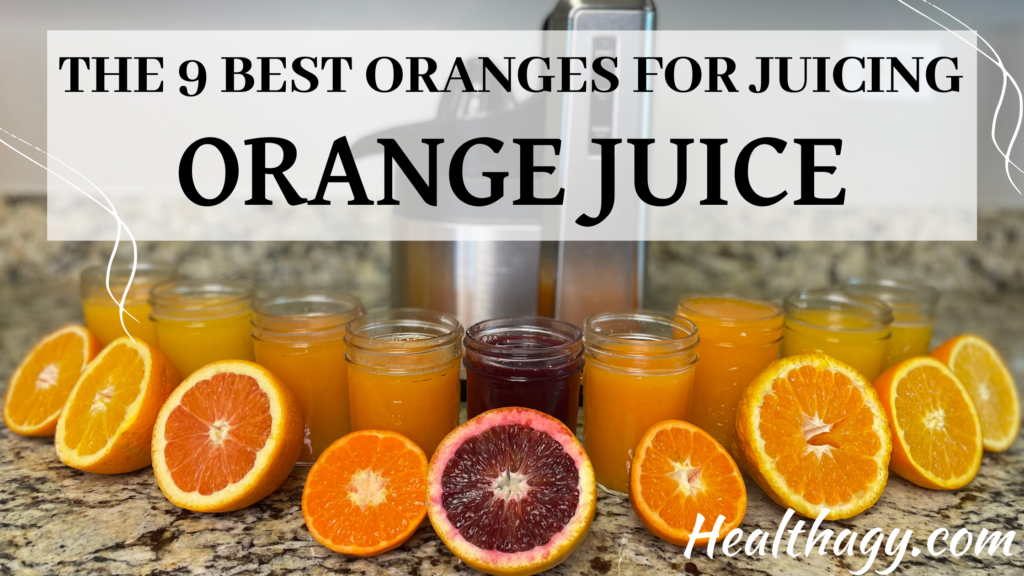
There is nothing like the taste of fresh-squeezed orange juice, and once you’ve been accustomed to it, you won’t ever want to go back to store-bought orange juice.
My love for fresh-squeezed orange juice in the morning is what inspired me to buy my first juicer and ultimately opened my eyes to all the health benefits juicing has to offer.
If you are anything like me, you are on a quest to make the most of your juicer and have the most delicious orange juice you can get your hands on! So, this post is for you, my fellow orange-juice loving friend!
In writing this post, I decided to taste-test every citrus orange option I could get my hands on in the grocery store to consider the taste, amount of juice each orange produced, and a round-about cost.
The Best Oranges for Juicing
With so many different types of oranges available, I’ve done my best to narrow the options down for you to the best type of orange for juicing based on what is important to you.
Best Tasting: Sumo Oranges
Most Economical: Organic Navel Oranges
Best for Traditional Tasting Orange Juice: Organic Valencia Oranges
Sweetest Orange Juice: Heirloom Navel Oranges
Most Antioxidants: Blood Oranges
Best Twist on Traditional Orange Juice: Blood Oranges
Keep reading to learn everything you need to know about juicing these oranges and other best oranges for juicing delicious orange juice based on taste, nutrition, cost, and research on each type of oranges.
1. Sumo Citrus

The Sumo Citrus is a big orange. It is a hybrid citrus fruit, a cross-breed of the Navel, Pomelo, and Mandarin oranges. It is the largest and sweetest of mandarins, with a unique top knot or bump on top. Sweet, tart, and refreshing, it is the most delicious orange juice you can lay your lips on.
Taste: It is incredibly sweet, tart, low in acidity, and refreshing. It is said to be the most delicious orange juice, and I’d 100 percent agree! It also blends well with valencia orange juice. The drawback of Sumo Citrus is its limited availability and heftier price tag.
Availability: January to April, sumo citrus is on the pricier side and the most expensive option on this list. Although it is rugged-looking, it’s actually a delicate citrus fruit and takes much expertise and care to grow.
Taste-wise, Sumo is the best. However, with their limited availability and cost it’s going to be tough to juice these regularly. Sumo oranges are a great treat when they’re available, but the price (about 3-4 times more costly than navel oranges) can make them difficult to juice on a daily basis.
2. Navel and Organic Navel Oranges
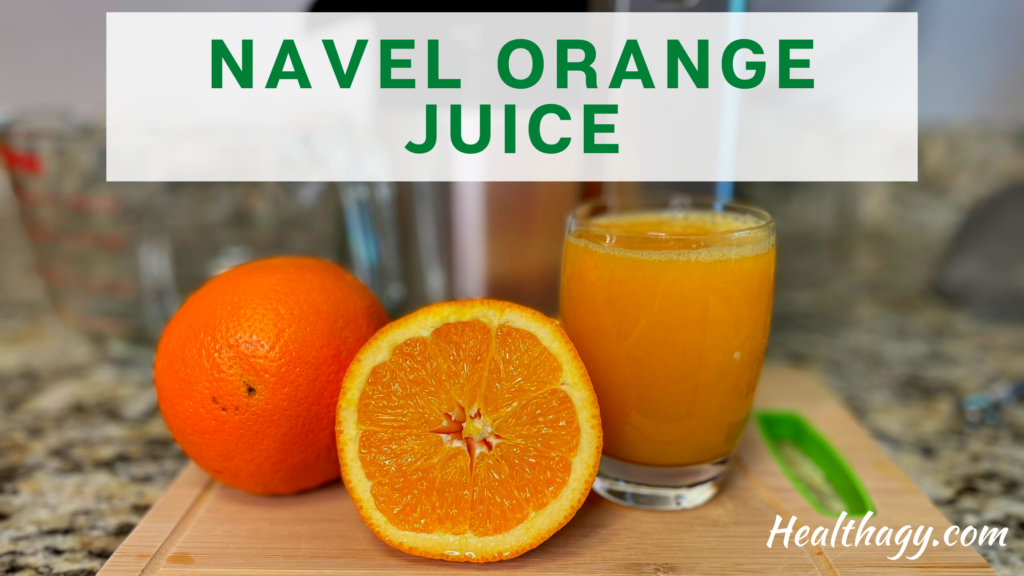
Navel oranges are a great choice both for your wallet and taste buds. Navel oranges tend to be the most price-friendly oranges, available throughout the year, and they taste delicious!
Navel oranges are best when fresh, whether you are juicing or eating them. When you juice navel oranges, you’ll want to drink the juice within a few hours; otherwise, the juice will become bitter.
Navel oranges contain a compound called limonin. Limonin produces a bitter taste in the juice. Limonin is a strong antioxidant with many benefits, but the downside is it has a bitter taste in time when exposed to air.
Limonin is found in many citrus fruits, either in the flesh of the fruit or seeds. It is a strong antioxidant, proving to be highly beneficial in killing cancer cells. Despite its multiple advantages, the only downside is is very bitter, leaving the fruit not so great for juicing. In my experience, the navel orange juice is by far the best when consumed immediately, but I do still find it delicious and not bitter in most cases 24 hour after juicing. I have had a few instances when I have noticed the bitterness fairly quickly though.
I do think it’s important to note, with any fruit, there is always a range in the quality of produce. I’ve had some not-so-great navel orange juice as well as some outstanding navel orange juice. You will always get better-tasting orange juice when you can find high-quality produce. I’ve also found organic navel oranges to taste better than conventional.
Taste: Sweeter tasting, but can become bitter after juicing. Best to consume immediately.
Availability: Most of the year and often the most budget friendly option.
3. Blood Oranges
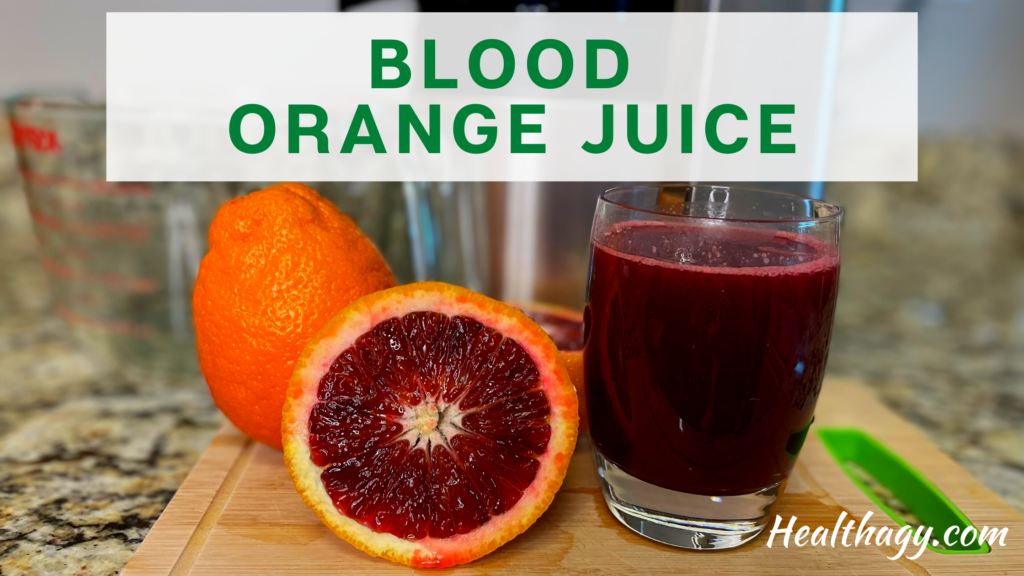
Blood oranges are packed full of antioxidants due to their deep dark red color. While they contain comparable amounts of calories and vitamins to other oranges, they contain much more antioxidants. Their red pigmentation is a result of increased levels of anthocyanins, which is found in much lesser amounts in other oranges.
Taste: Blood oranges have a robust flavor, with sweet yet tart raspberry notes and contain less acid than other oranges. The flesh of the orange and the juice has dark red, maroon, purplish color- it doesn’t look like your typical orange juice. Blood oranges blend well with more traditional orange juice options such as navel and valencia.
Blood oranges are up there with my favorite tasting orange juice behind Sumo. Blood orange juice is much more tart though than Sumo orange juice and is one of the healthiest options as it is full of antioxidants on top of other vitamins and minerals.
Availability: January through April.
4. Valencia and Organic Valencia Oranges
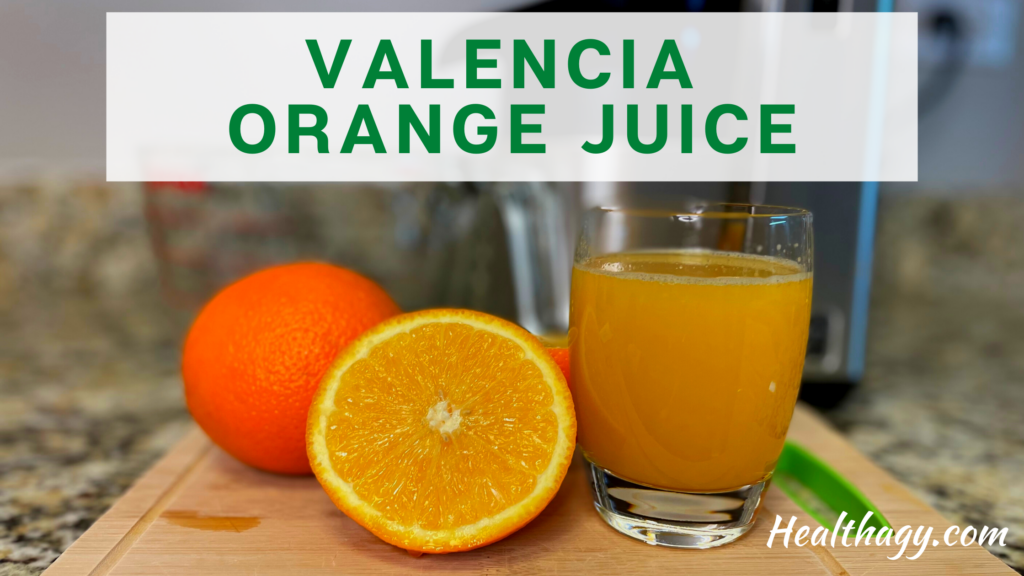
Valencia oranges are the most common and popular oranges for juicing due to their sweet taste, high yield, and availability. They may even be labeled as “juice oranges.”
Valencia oranges are a hybrid of Pomelo and Mandarin. Valencia oranges are juicy and sweet, containing few seeds, making for an easier juicing process. They are popular for commercial juices due to their low cost, sweet taste, and appealing deep orange color. Valencia oranges are the most common orange used to make orange juice and a great option for juicing.
Taste: Sweet taste, “standard” orange juice taste, it can be thought of as the neutral choice, most people enjoy Valencia orange juice as it is what they are most used to from store-bought juice.
Availability: April to December
5. Heirloom Navel Oranges
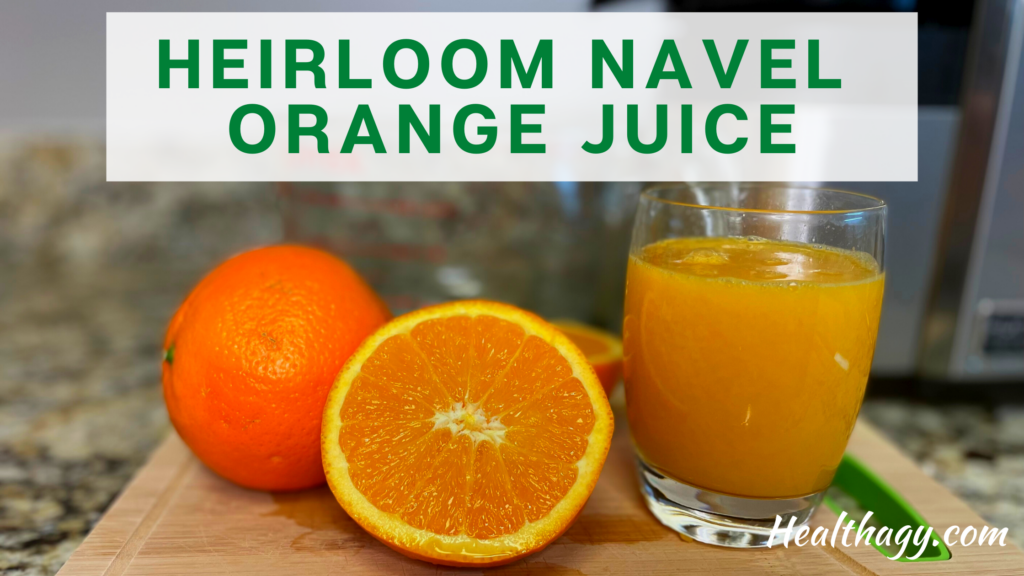
Heirloom navel oranges are also known as super sweet navel oranges. These are known to be much sweeter and more flavorful than regular navel oranges. They are grown on trees more than 100 years old using traditional old-school farming practices. The grower gives special attention to the soil that isn’t given to regular navels, giving them a superior taste and flavor.
They have rightfully been given the name “super sweet oranges” if you like super sweet orange juice, you’ll love Heirloom Navels as they have a super sweet flavor and are full of tang.
Availability: November to April, the cost tends to be just slightly more than navel and valencia oranges.
Taste: The Heirloom Navel juice was the sweetest orange juice I tried. I enjoy it and do juice it often, but it’s pretty sweet in regards to drinking a big glass or juicing regularly. If the heirloom is too sweet for you, it blends well with a regular navel or valencia, which can help tame the sweetness.
6. Cara Cara Navel Oranges
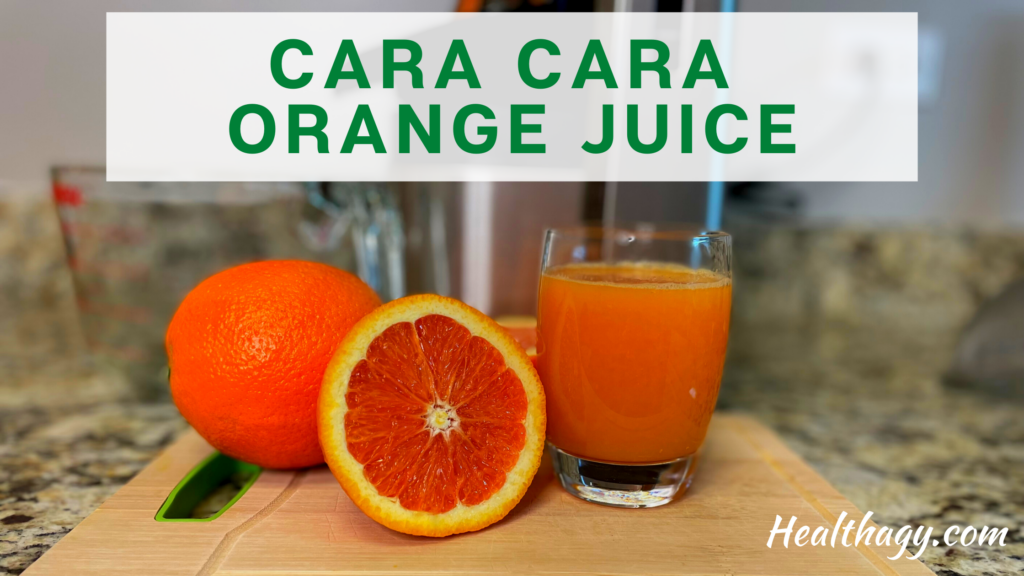
Cara Cara oranges are also known as the red-fleshed navel orange. They are a hybrid orange of the naval and blood oranges (also on this list), which gives them a combination of reddish-pink flesh.
Cara Cara oranges have a sweet taste with a low acidic level, which makes the sweet taste even more enjoyable. They are seedless and provide a good yield of juice. They are a great source of vitamin C and Vitamin A, with higher levels than a standard navel orange.
Taste: They have a sweet taste and a low acidic acid, enhancing the sweetness. They are more flavorful juice than other orange juices, with a hint of cherry to blackberry and rose petal.
Availability: August to April
7. Satsuma Oranges or Satsuma Mandarin Oranges
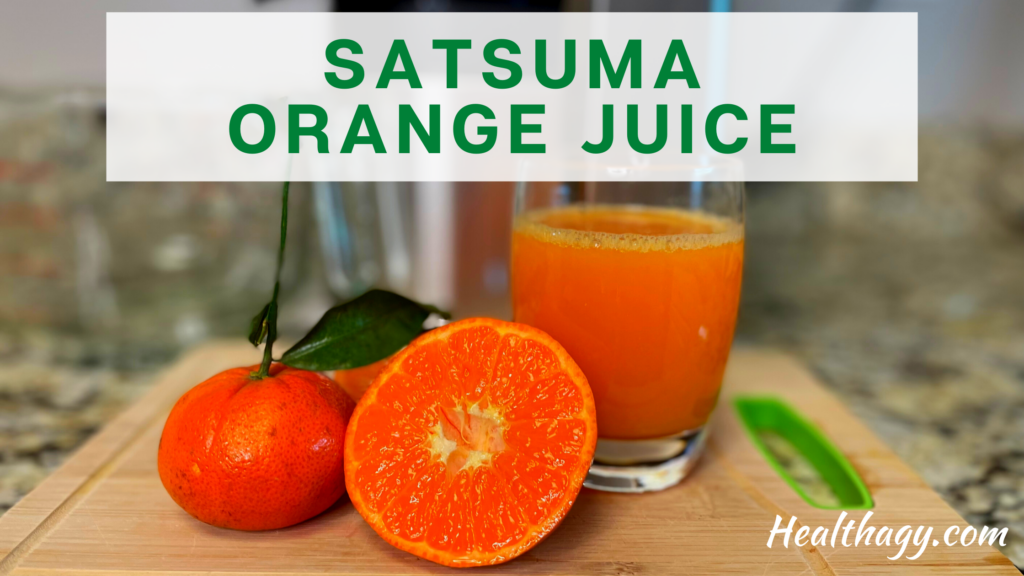
Satsuma mandarin oranges are a more specific type of mandarin oranges. Mandarins are often available year-round, while satsuma mandarins have a shorter availability. Satsumas are the juiciest of the mandarin family, which includes tangerines and clementines. They have a balanced sweet-yet-tart flavor. They are a great alternative to regular orange juice.
Availability: late October through December
8. Organic Minneola Tangelo Oranges
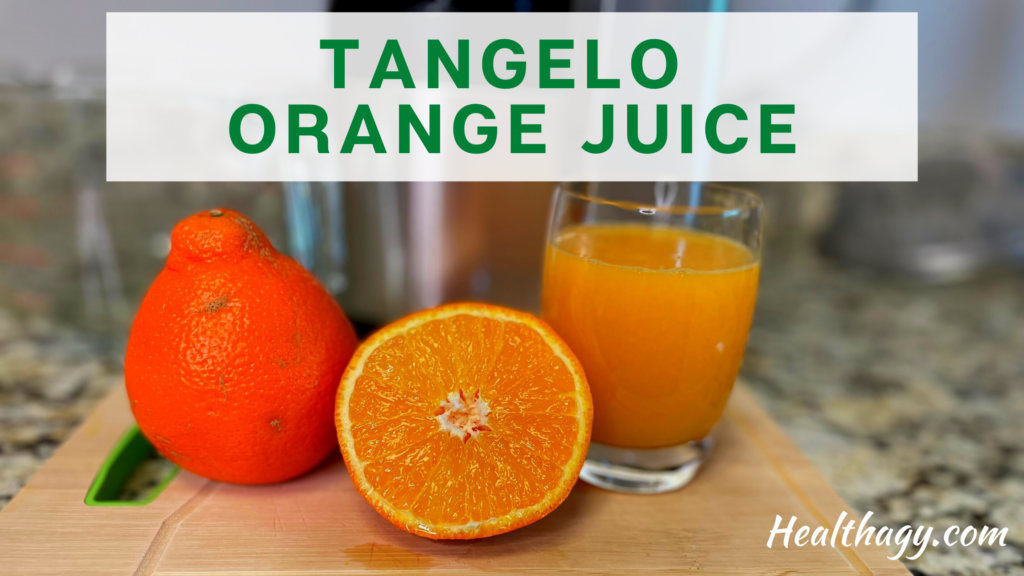
Minneola Tangelos are a citrus fruit that is a cross between a Dancy tangerine and an ancestral variety of grapefruit called pomelo. They are a larger citrus fruit, with an elongated “neck,” which distinguishes them from other citrus fruits. The minneolas are the most popular variety of tangelos. They are seedless, providing a sweet yet mildly tart juice.
Tangelos have the sweet, intense flavor of a tangerine that is calmed by the tart and tang, taste of a grapefruit, giving tangelos a sweet-tart, exotic in flavor. The tarty and tangy taste make it a great option to freeze the juice for a frozen juice treat.
Availability: December through March
9. Clementine Oranges
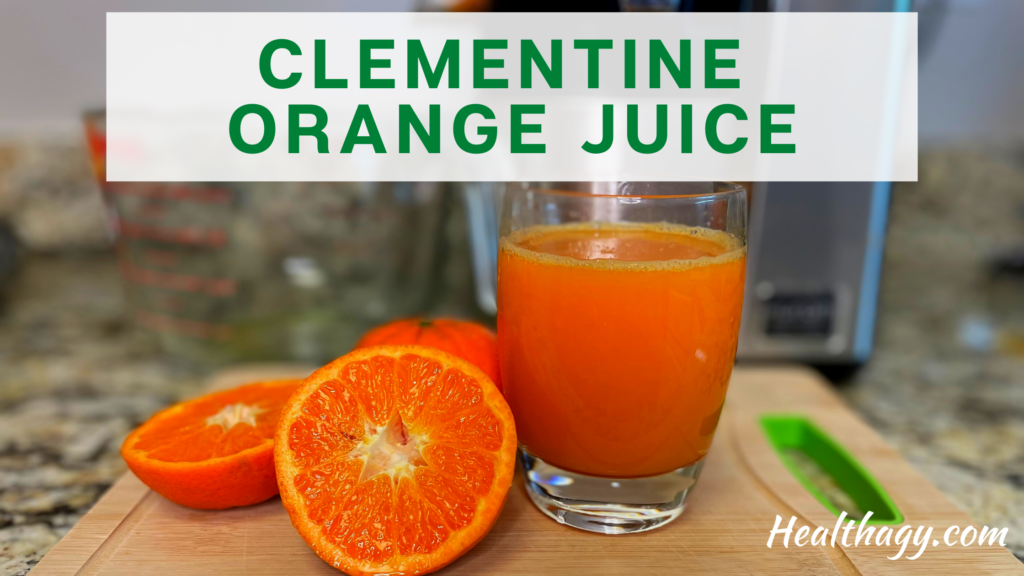
While clementines aren’t typically the orange thought of when it comes to juicing, they actually do make a great alternative to a regular orange juice. They are sweeter and more tart, giving an extra tangy flavor.
Clementines are a type of mandarin. Some may even call them mandarins. They are also a better option for juicing than tangerines as they are sweeter. If you love clementines or “Cuties” as they’ve become known by, you’ll surely love them as juice!
The taste of clementine juice is calm and has less of an acidic sweetness than the others, with the classic clementine taste.
I used a citrus juicer for all the oranges, but found clementines to be challenging to juice with the citrus juicer as the orange segments are so small, and the rind peel comes off so quickly. I also tried to use my handheld lemon squeezer, which also didn’t go so well. I think more squirted on my face than did in the glass, which at least gave me a good laugh! I ended up finding my slow juicer to be the easiest and best option to get a full-size glass of clementine juice.
Availability: December to February
Organic vs Conventional Oranges
To add to your options for choosing oranges, you may be wondering if buying organic is worth the extra money spent? While you discard the orange peel when juicing, one study found that organic oranges have up to 30% more vitamin C. So the choice is really up to you. Other studies have found that organic produce tends to be grown in more nutrient-dense soil. While the thick peel of the orange keeps it off the dirty dozen list, there are still taste and quality benefits of buying organic when available.
The Best Juicer for Juicing Oranges
In my opinion, the best orange juicers for fresh orange juice are citrus juicers. I tend to use the citrus attachment for my Hurom masticating juicer when I’m juicing plain orange juice. If I make an orange juice blend with something like carrots, I just use the masticating juicer itself.
The good news is you can also use a manual juicer to get the same quality juice. There are several manual citrus juicers on the market that are reasonable in cost without investing in an electric juicer.
If you have a centrifugal juicer, a citrus juicer is a better option for better tasting and more quality orange juice. The centrifugal juicer operates at higher speeds, and juice is more prone to faster oxidation and a loss of nutrients.
If you have a masticating or twin juicer, these are slow juicers, and you’ll likely get quality juice from them, regardless of whether you have a citrus attachment. I prefer pulp-free juice, so I strain the liquid using a handheld strainer before consuming it. I also like the ease of the citrus attachment as I only have to slice the oranges into halves rather than peeling the entire orange. It’s also less clean up and less to wash.
The Health Benefits of Fresh Orange Juice
Each variation of orange citrus fruit is going to offer slightly different nutritional benefits, however, they tend to be comparable. The exception is blood oranges are much higher in antioxidants, which is due to their rich red color.
A few of the vitamins and minerals you can get from oranges:
- Vitamin C: Oranges are a great source of vitamin C. Vitamin C supports your immune system and can help keep your skin healthy by supporting collagen growth. Vitamin C may also support maintaining healhty blood pressure.
- Carotenoids: Oranges are also high in carotenoids including beta-cryptoxanthin, which the body converts to vitamin A. Vitamin A supports vision health, cell growth and the immune system.
- Potassium: Oranges contain potassium, which can support nutrient absorption, bodily fluid balnce, muscle contraction and nerve support.
- Folate: Folate, which is also known as Vitamin B9, supports cell growth.
- Thiamine: Oranges contain Thiamine, also known as Vitamin B1. Thiamine supports your body to process the carbohydrates, proteins and fats from the foods.
It’s important to mention, that although oranges are naturally high in fiber, juicing oranges removes the fiber content. However, you can keep some of the fiber content by not straining out all the pulp in the juice. Pulp is fiber.
How Long Does Fresh Squeezed Orange Juice Last?
The shelf life of fresh-squeezed orange juice will depend on what type of juicer was used to juice it.
The short answer is assuming you store your orange juice in an airtight container in the refrigerator; it should last the specified number of hours listed below based on the type of juicer used.
Centrifugal Juicer: 12-24 hours
Masticating Juicer / Slow juicers: 48 hours
Citrus or Handheld Juicer: 72 hours
Twin Gear Juicer: 72 hours
Hydraulic Juice Press / Cold Press Juicer (commercial quality juicer): 72 hours
Remember that juice from navel oranges becomes bitter quickly due to the limonin, so even though orange juice from navel oranges may not have gone bad in 24 hours, the flavor profile will change to a more bitter taste. Navel orange juice will have a limited shelf life for a fresh, sweet taste, regardless of the juicer used.
I wrote a more detailed post that you may enjoy on how long juice lasts and how to best store it here.
Cheers to a delicious glass of orange juice!
Karla Kueber is a Certified Evidence Based EFT Practioner and Health Coach, with a double Masters Degree in Education. She works with people to overcome emotional eating, curb cravings, and overcome resistance to eating new healthy foods. You can learn more about coaching with her here.